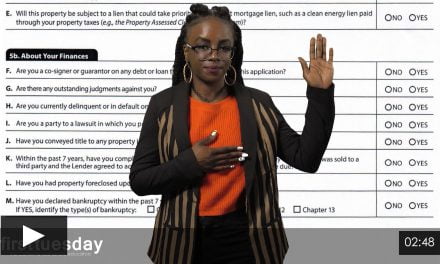The Consumer Financial Protection Bureau (CFPB) released a report in February 2019 analyzing the mortgage choices of first-time homebuying servicemembers, defined as those training for, serving in or who have previously served in the armed forces. Its scope is limited to the decade between 2006 and 2016 and focuses on the effect of the 2008 subprime mortgage crisis.
VA-guaranteed mortgages come out on top
One of the report’s key findings is a spike in mortgages guaranteed by the U.S. Department of Veterans Affairs (VA) during the 2008 subprime mortgage crisis. The share of first-time homebuying servicemembers taking out VA-guaranteed mortgages rocketed from 30% before 2007 to 63% in 2009.
This program is one of many government mortgage programs aimed at helping servicemembers purchase a home, but what about their civilian counterparts? Non-servicemembers seeking an alternative to conventional mortgages may find a solution in the Federal Housing Administration (FHA) and U. S. Department of Agriculture (USDA) mortgage programs.
First-time homebuyers who are not servicemembers mirrored the move towards government mortgages by flocking to FHA and USDA mortgages around the same period. Conventional home loans made up nearly 90% of new home purchases before 2008, but this figure plummeted to 41% only a year later.
How did VA-guaranteed mortgages get so popular? For many borrowers, the most persuasive benefits are that they:
- do not require down payments;
- do not require mortgage insurance; and
- cap origination fees at 1% of the mortgage amount.
Related article:
U.S. Department of Veterans Affairs (VA)-guaranteed mortgages, explained
If it sounds too good to be true, that’s because it is—sometimes.
VA-guaranteed mortgages offer low origination fees but make up for it with a funding fee that can be rolled into the mortgage. They do not require a down payment, but not making one may increase your funding fee and monthly payments. And while mortgage insurance is not required, the funding fee is basically mortgage insurance in disguise.
Despite these caveats, VA-guaranteed mortgages’ valuable benefits place them at the head of the pack for servicemembers looking to buy a home. Similar state programs like CalVet struggle to keep up in popularity against VA-guaranteed mortgages.
Unconventional times call for unconventional mortgages
The CFPB report attests to VA-guaranteed mortgages’ popularity, but it also illuminates a greater trend in the mortgage industry between 2006 and 2009. Homebuyers (both servicemembers and non-servicemembers) shifted away from conventional mortgages toward government-guaranteed mortgages en masse.
This trend can be attributed to the high-risk, low- or no-documentation conventional mortgages lenders originated during the subprime mortgage crisis. After the crisis, conventional mortgage lenders shifted to more stringent standards, taking into account a borrower’s ability to repay as part of the underwriting process.
As a result, consumers found conventional mortgages much harder to qualify for and turned to government mortgage programs for relief because of their less stringent down payment and qualification requirements.
Home purchases were mostly financed with conventional mortgages during the housing boom, according to a 2018 CFPB report. A shift in this behavior began in 2006, when the share of conventional mortgages by first-time homebuyers was a steady 60%. Just ten years later, this share had fallen to 13%.
While both servicemembers and non-servicemembers rejected conventional mortgages during the recession, their behavior diverged after the crisis. The CFPB reports conventional mortgage use among non-servicemembers recovered almost half of the market share it lost in the recession. In contrast, 78% of mortgages taken out by servicemembers in 2016 were VA-guaranteed mortgages. They remain the most popular financing option for servicemembers today, far beyond their pre-boom market share.
These findings aren’t a surprise to agents who worked during the recession, but the CFPB’s first-of-its-kind report offers a bird’s eye view of the industry in a critical period. You can read the CFPB’s full report here: Quarterly Consumer Credit Trends: Mortgages to First-time Homebuying Servicemembers.
Looking ahead
With the yield spread at its lowest point since the 2008 recession, expect the next recession to arrive mid-2020. Agents can also count on government mortgage programs growing in popularity again, just as they did during the 2008 recession.
Mortgage programs like those of the VA, FHA and USDA are in place for exactly this scenario—to protect the mortgage industry from total gridlock in times of economic stress. As this recession looms large on the horizon, agents need to familiarize themselves with government mortgage programs and application processes.
Agents — are you seeing more demand for non-conventional loans? Leave your experiences in the comments below.














